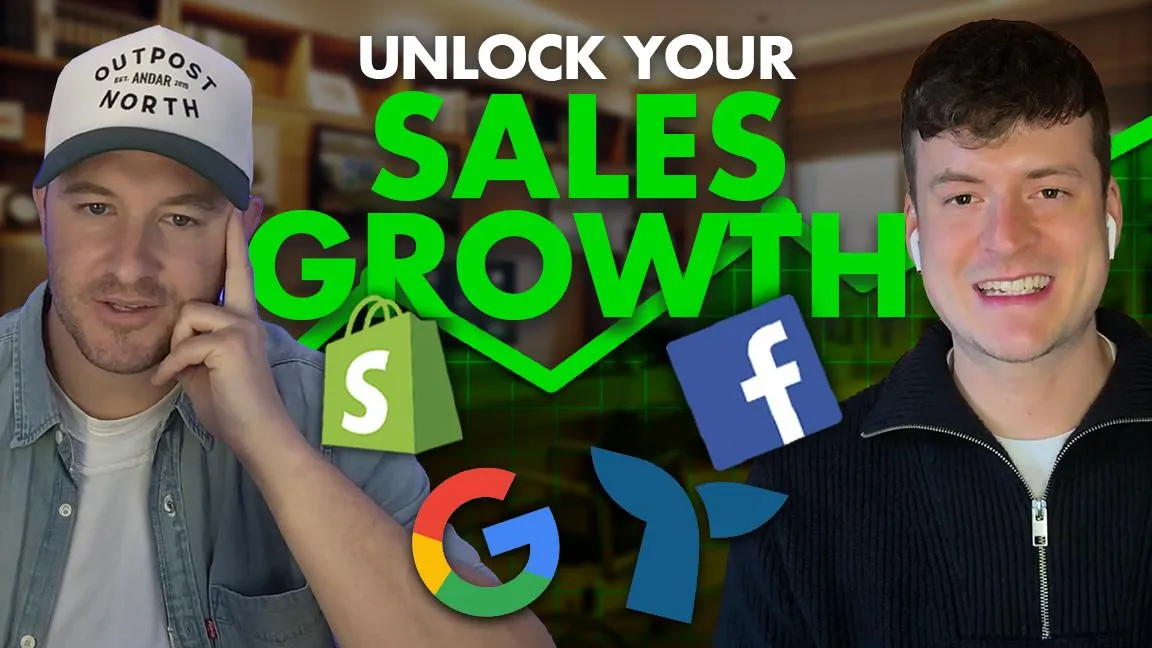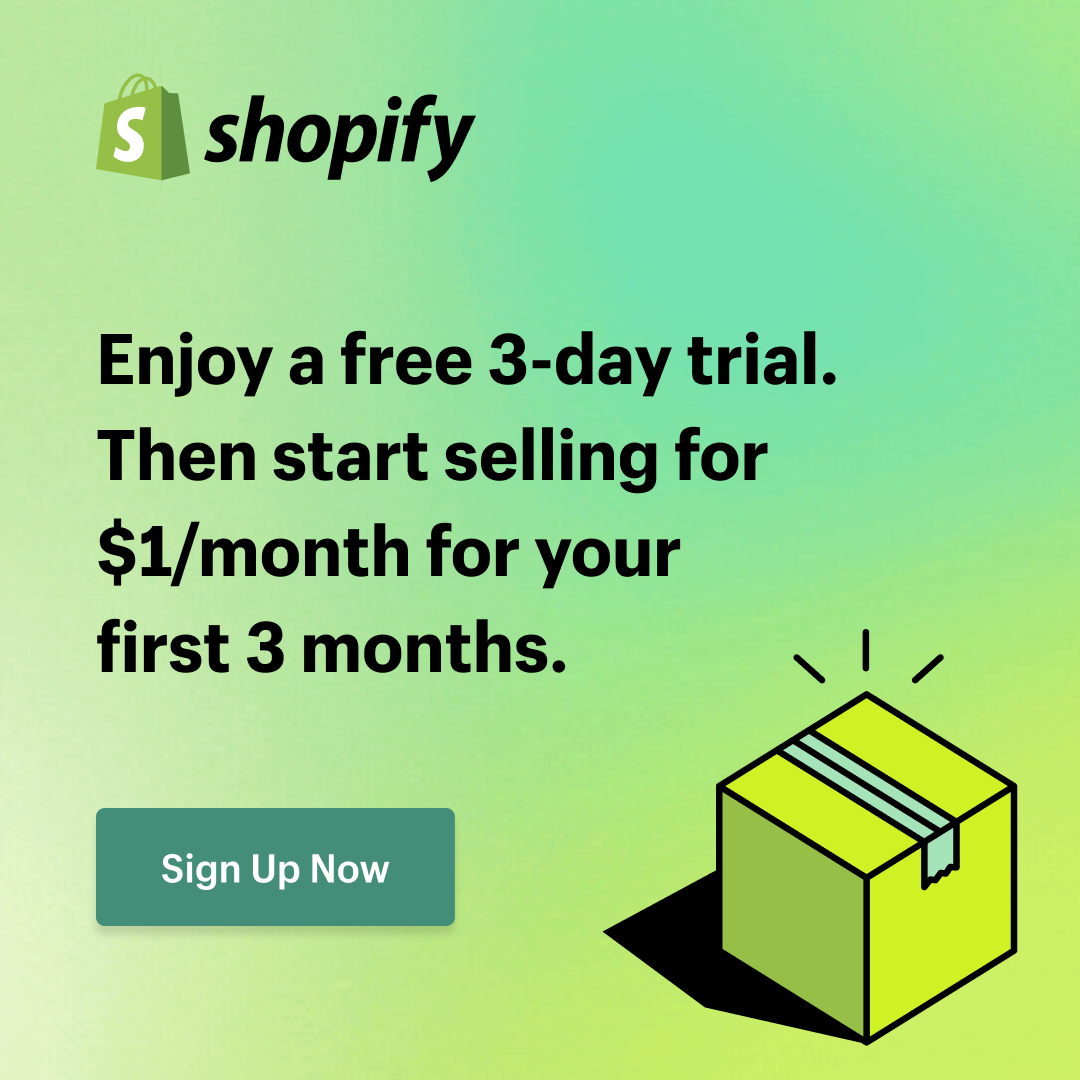DROPSHIP UNLOCKED BLOG
Click the posts below to read/watch them in full.

E-Commerce Growth Hacks: What the Best Brands Do with John Coyle (Episode 104)
👉 Ready to start your own online store? Start here: https://dropshipunlocked.com/start?utm_source=blog&utm_medium=article&utm_campaign=ep104-ecom-growth-john-coyle
Book a demo with Triple Whale today: https://dropshipunlocked.com/triplewhale
🗣John Coyle is an expert in sales attribution and e-commerce growth, and a key player at Triple Whale. John shares his extensive experience in optimising marketing channels, improving sales attribution, and leveraging data for e-commerce brands.
With Triple Whale tracking 10% of all Shopify revenue, John offers insights into what makes successful brands tick, and how you can use these growth hacks to scale your e-commerce business.
👉 Do you know someone who would love this? Share this video ➡️ https://youtu.be/ceRJBh53UI4?si=2CF-psiLu3LgIART
---------------------------------------------------------
Links and Resources Mentioned:
Follow John on all social platforms: @JohnJHCoyle
John’s Podcast: Dark Mode with John Coyle
Pick up a copy of Lewis’ book: https://htabook.com
Get Shopify for £1 a month for 3 months: https://www.dropshipunlocked.com/shopify
Get a free trial with a professional phone line: https://www.dropshipunlocked.com/circle
---------------------------------------------------------
Key Takeaways:
★ Demand Capture vs. Demand Generation: Not all e-commerce brands need to create new demand from scratch; some can focus on capturing demand created by others, especially for high-ticket items.
★ Multi-Touch Customer Journeys: The buyer’s journey is complex and involves multiple touchpoints across channels, making sales attribution tools essential to understanding what’s really driving sales.
★ Leverage Sales Attribution: Accurate sales attribution allows you to optimise ad spend by understanding which channels and ads are converting and which aren’t, allowing you to scale your business more effectively.
★ Reframe and Replace: By reframing products to solve a different problem or positioning them as replacements for a bad habit, you can create compelling offers that attract new customers.
---------------------------------------------------------
Learn More:
➡️ When people are ready to create time and financial freedom for themselves, they visit - https://dropshipunlocked.com/start?utm_source=blog&utm_medium=article&utm_campaign=ep104-ecom-growth-john-coyle
➡️ Subscribe to The Dropship Unlocked Podcast to stay up-to-date on the latest episodes, and leave a like to help others discover the show.
---------------------------------------------------------
Topics Discussed:
In the "E-Commerce Growth Hacks: What the Best Brands Do" episode 104 of Dropship Unlocked, John Coyle, an expert in sales attribution and e-commerce growth, discusses his insights into successful e-commerce strategies. With access to data from over 10% of all Shopify Revenue, Coyle provides valuable insights into the strategies used by top e-commerce brands to optimise marketing channels and boost conversions. He shares his background in e-commerce and the importance of having a multi-pronged approach, combining both top-funnel (discovery) and bottom-funnel (demand capture) strategies. Coyle emphasises the importance of effective messaging in e-commerce for generating demand and the use of tools like Triple Whale for sales attribution. He also discusses effective channels for paid ads, such as Meta and YouTube, and the importance of capturing email addresses and nurturing relationships for future sales. Coyle also touches on effective e-commerce strategies, including capitalising on existing demand and reframing products for different markets. Throughout the episode, Coyle emphasises the importance of data-driven decisions and understanding customers' pain points to create compelling messaging and offerings.
00:00:00 In this section, an expert in sales attribution and e-commerce growth, joins the hosts to discuss his journey in the e-commerce space and his current role at Triple Whale. With access to data from over 10% of all Shopify Revenue, John provides valuable insights into the strategies successful e-commerce brands use to optimise marketing channels and boost conversions. He shares his background in e-commerce, from working at an agency to founding his own brand and agency, and his current role at Triple Whale, where he helps businesses make data-driven decisions to drive growth.
00:05:00 In this section, the discussion revolves around the e-commerce landscape, specifically focusing on the growth of Triple Whale, a third-party attribution tool. Coyle explains that from 2015 to 2020, e-commerce experienced significant changes, with the ease of drop shipping peaking in 2015 and becoming increasingly challenging in the following years. However, the pandemic in 2020 led to a surge in online shopping and revenue for many brands. Additionally, Apple's iOS 14 update made it difficult to track Facebook ad performance, prompting the need for a solution like Triple Whale. The tool helped brands understand their sales' origin and optimise their advertising spend. As e-commerce continues to evolve, Coyle predicts that high-ticket item buyers will follow a complex journey involving multiple touchpoints, such as Facebook and Instagram ads, TikTok, podcasts, and YouTube creator integrations.
00:10:00 In this section, the discussion revolves around different growth strategies for e-commerce brands, specifically focusing on high-ticket items. Coyle explains that some brands function as demand capture entities, creating trends and waves in the market, while others simply take a piece of the existing pie by targeting bottom-funnel customers. An example of a demand capture brand is an ice tub company that made cold plunging popular by partnering with influencers and running ads on various platforms. These brands have control over their growth but face the risk of losing their customer base if the trend fades. On the other hand, brands that focus on capturing demand from existing customers, such as those selling grills or ice tubs, have a more stable customer base but lack control over market trends. Coyle emphasises the importance of having a multi-pronged approach, combining both top-funnel (discovery) and bottom-funnel (demand capture) strategies. He also mentions the existence of authorised resellers on platforms like Amazon, who can capitalise on the demand generated by other brands. Ultimately, brands need to adapt to their unique ecosystems and find their niche within the market.
00:15:00 In this section, John Coyle discusses the importance of generating demand in e-commerce rather than just capturing it. He explains that successful brands thrive in their unique environments by focusing on demand generation through Google ads for high-ticket items and retargeting ads. For new brands looking to dominate their industry, Coyle suggests improving demand generation skills is crucial. He argues that it's not about the platform but being a skilled marketer. Coyle introduces a formula for creating an offer, which includes dream outcome, perceived likelihood of achieving it, time delay, and effort and sacrifice. Using the example of weight loss and exercise equipment, he demonstrates how changing the dream outcome and improving other factors can make the offer more appealing. Ultimately, great demand generation comes down to the value equation in the product and messaging.
00:20:00 In this section, the focus is on effective channels for paid ads and generating demand. Coyle suggests starting with Meta ads for ease and control over demand generation. He emphasises the importance of nailing the messaging and offer equation, which is more effective with demand generation. Coyle provides examples of successful brands that have reframed or replaced existing products to attract customers, such as Cold Plunge and Hostage Tape. He concludes that in today's market, where wallets may be tighter, the reframe or replacement angle can be an effective messaging strategy.
00:25:00 In this section, John Coyle discusses the importance of effective messaging in e-commerce for generating demand for products. He explains that while suppliers control the actual products, sellers have the power to create compelling messaging around them. Coyle suggests that platforms like YouTube, Meta (Facebook), and TikTok are ideal for demand generation through video ads, as they allow for more creative storytelling and education of potential customers. He believes that the best demand generation ads start by addressing a pain point or problem, moving customers through the awareness stages towards a solution and a product. Coyle also mentions the use of sales attribution tools like Triple Whale to help connect the dots and understand customer behavior in the buying process.
00:30:00 In this section, John Coyle discusses the importance of capturing email addresses through discount offers and nurturing the relationship for future sales. He emphasises that not all potential customers will make a purchase on their first visit, and the real magic happens in building relationships and retargeting. For high ticket items, it's essential to make the offer as irresistible as possible to secure first click returns. However, measuring the incremental value of different ads and messages can be challenging, which is where TripleWell comes in, helping clarify the return on investment. Ultimately, making informed decisions based on data is crucial for success in e-commerce.
00:35:00 In this section, he discusses two effective e-commerce strategies for brands. The first strategy is capitalising on existing demand by identifying markets where direct sales companies dominate, such as essential oils, and offering a lower-priced alternative on platforms like Amazon and Google. The second strategy is reframing a product for a different market or need, which can be more challenging but successful in creating a replacement brand. Coyle also mentions the trend of podcast advertising, specifically on YouTube, as a high-performing channel for high-ticket items. He concludes by mentioning TikTok as an exciting trend, with brands leveraging TikTok creators and the affiliate program to sell products through their TikTok shops.
00:40:00 In this section, John Coyle discusses the challenges e-commerce brands face in creating a strong dream outcome for customers, which is essential for success. He argues that many e-commerce brands struggle to tie their products to significant dream outcomes, making it difficult to differentiate themselves from competitors. Coyle uses the example of a hat brand, Andar, and explains that it's challenging to associate a substantial dream outcome with a hat. Instead, he suggests focusing on pain points and the things people spend money on to address those issues. By offering a convenient solution that saves money and provides good food, for instance, a brand can take market share in the health and wealth categories. Overall, Coyle emphasises the importance of understanding customers' pain points and offering a product or service that addresses those needs while also providing a dream outcome, even if it's subtle.
00:45:00 In this section, John Coyle discusses the importance of identifying and addressing the obstacles that prevent consumers from achieving their desired health outcomes. He uses the example of bread, which people may know is not ideal for their health but find it convenient and delicious. Brands that can offer healthier alternatives with similar convenience and enjoyment can capture market share. Coyle suggests looking for products that can be tied to desirable outcomes, such as health, wealth, or relationships, to create compelling messaging. He also recommends checking out Triple W for resources on e-commerce and attribution.
00:50:00 In this section, John Coyle emphasises the importance of utilising data to optimise marketing efforts and avoid wasting resources on ineffective ads. He uses the analogy of cooking with the wrong ingredients to illustrate the potential disaster of growing a business without accurate data. Coyle also recommends tools like Triple Whale to help track, optimise, and scale e-commerce stores based on data. Before reaching the £90,000 revenue threshold, businesses are not required to pay VAT to HMRC but must charge customers the suggested prices from suppliers. Once registered for VAT, businesses pay VAT on revenue and can claim it back on costs, resulting in a reduction of margins between 5% to 15%. For a more in-depth understanding of VAT and dropshipping taxes, listeners are encouraged to check out episode 92 of the podcast. The podcast team also thanks a listener, Luke Brown, for his positive feedback and shares his resonance with the host's experiences and love for traveling. A favor is asked of listeners to share the episode with those who might benefit from it.
00:55:00 In this section, John Coyle welcomes listeners to the episode and expresses his hope that they gain valuable insights and inspiration for their e-commerce journey. He encourages listeners to check out his book, "The Home Turf Dev Voltage," for practical guidance on building an e-commerce business. He also invites them to subscribe for more strategies and success stories. Lastly, he expresses gratitude for their time and promises more insights on the next episode.
---------------------------------------------------------
FOLLOW:
Instagram: https://www.instagram.com/dropshipunlocked/
Twitter: https://twitter.com/DropshipUnlockd
LinkedIn: https://uk.linkedin.com/company/dropship-unlocked
Youtube: https://www.youtube.com/c/dropshipunlockedlewissmith
Website: https://www.dropshipunlocked.com/
---------------------------------------------------------
🌏Want to create location, time and financial freedom? Watch Our Free Training ➽ https://dropshipunlocked.com/start?utm_source=blog&utm_medium=article&utm_campaign=ep104-ecom-growth-john-coyle
---------------------------------------------------------
★★★Dropship Unlocked - Lewis Smith★★★
How to Launch a UK Dropshipping Business Offering Next-Day Delivery...
...Even If You Don't Yet Know Which Products To Sell
🌏Watch Our Free Training ➽ https://dropshipunlocked.com/start?utm_source=blog&utm_medium=article&utm_campaign=ep104-ecom-growth-john-coyle
Join Lewis Smith, Founder of Dropship Unlocked as you build and launch your high-ticket dropshipping business.
📺 Don't Forget to SUBSCRIBE to our Youtube Channel! (Its Free)
🔰 SUBSCRIBE here ➽https://www.youtube.com/channel/UC9r29zg3RE4e-zDDwVjdJOA?sub_confirmation=1


How to Start a UK Dropshipping Business Offering Next-Day Delivery...
Learn to find profitable products, sign reputable UK suppliers and build a sustainable brand.

About
The Masterclass
Reviews
Watch Our Training
Blog
IMPORTANT: Earnings and Legal Disclaimers: We cannot and do not make any guarantees about your ability to get results or earn any money with our ideas, information, tools, or strategies.
Nothing on this page, any of our websites, or any of our content or curriculum is a promise or guarantee of results or future earnings, and we do not offer any legal, medical, tax or other professional advice. Any financial numbers referenced here, or on any of our sites, are illustrative of concepts only and should not be considered average earnings, exact earnings, or promises for actual or future performance. Use caution and always consult your accountant, lawyer or professional advisor before acting on this or any information related to a lifestyle change or your business or finances. You alone are responsible and accountable for your decisions, actions and results in life, and by your registration here you agree not to attempt to hold us liable for your decisions, actions or results, at any time, under any circumstance.
© 2025 Copyright | SRL Ecom Ltd (T/A Dropship Unlocked) 124 City Road, London, EC1V2NX is a company registered in England and Wales, Company Number 11444810 | 02032866553 This site is not a part of the Facebook™ website or Facebook™ Inc. Additionally, this site is not endorsed by Facebook in any way. FACEBOOK™ is a trademark of FACEBOOK™, Inc.







